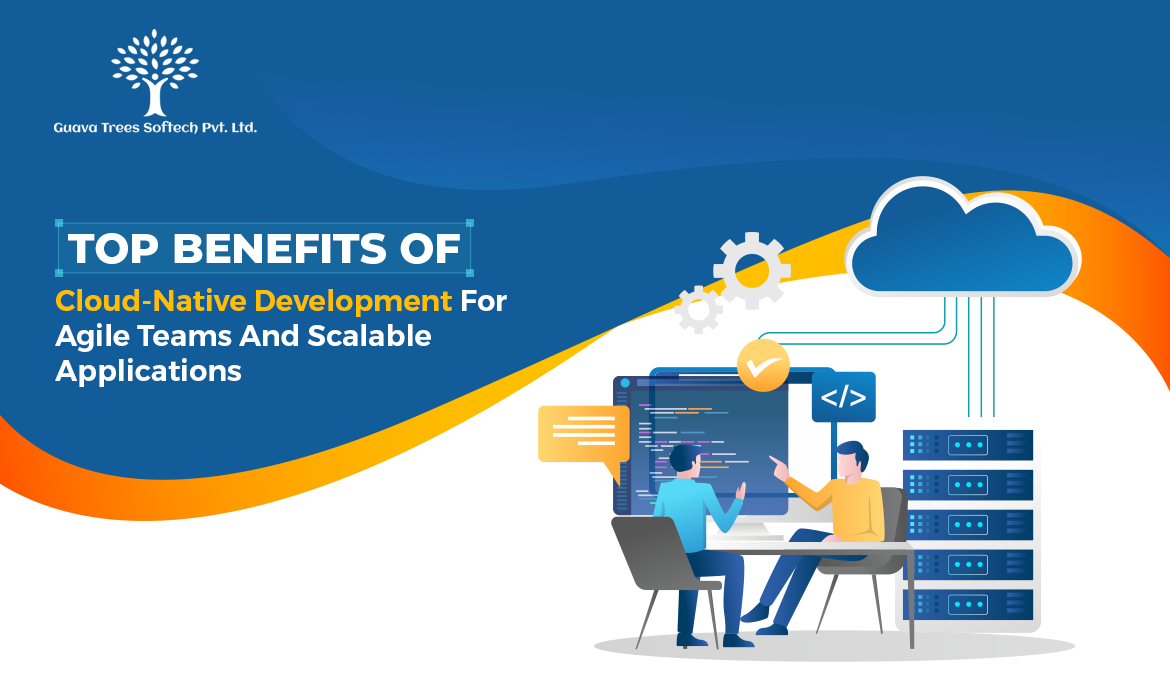Cloud-native development represents a modern approach to software engineering, leveraging cloud technologies, microservices, containers, continuous integration/continuous deployment (CI/CD), and automation. For agile teams—where rapid iteration, adaptability, and efficiency are crucial—embracing cloud-native principles unlocks several significant technical and business advantages, fundamentally transforming how scalable applications are built, deployed, and managed.
- Acceleration of Agile Delivery Cycles
Cloud-native architecture synergizes perfectly with agile methodologies, enabling continuous integration, frequent releases, and rapid iteration. Features such as automated CI/CD pipelines, instant environment provisioning, and infrastructure as code (IaC) allow teams to build, test, and deploy updates quickly and reliably. With cloud-based tooling, multiple teams can collaborate on parallel features, reducing release times from months to days or even hours.
Technical Benefits:
- CI/CD automation:Automated workflows minimize human errors, streamline builds, and facilitate perpetual delivery pipelines.
- DevOps enablement:Integrated DevOps practices shorten feedback loops and ensure smoother hand-offs from development to operations.
- Real-time collaboration:Centralized dashboards and shared environments in the cloud foster communication among distributed teams, increasing productivity.
- Scalability by Design
One of the foremost advantages of cloud-native development is elastic scalability. Applications are decomposed into microservices—independent, loosely coupled components—which can scale horizontally on demand. This ensures that resources are automatically provisioned to meet fluctuating workloads, providing both cost efficiency and consistent user experience regardless of traffic spikes.
Technical Benefits:
- Microservices architecture:Individual services scale independently, so bottlenecks are eliminated, and resource allocation is precise.
- Container orchestration:Platforms like Kubernetes enable intelligent scaling, failover, and load balancing, optimizing usage and reliability.
- Serverless computing:Serverless models allow code execution in response to events, scaling from zero to thousands of concurrent executions as needed, without manual intervention.
- Enhanced Reliability and Resilience
Cloud-native solutions are engineered for resilience, featuring automatic failover and self-healing mechanisms that keep applications available—even when underlying components fail. Microservices isolation ensures that problems in one service do not cascade to others. Additionally, rolling updates and blue/green deployments can be executed with minimal disruption, thereby reducing downtime and ensuring high availability.
Technical Benefits:
- Fault isolation:Issues are contained within a microservice, improving troubleshooting and mitigating system-wide failures.
- Automated recovery:Cloud infrastructure can automatically replace failed instances and rebalance workloads.
- Distributed deployment:Applications spread across multiple zones or regions minimize the risk of localized failures impacting users.
- Cost Optimization
Cloud-native leverages the cloud’s pay-as-you-go model, enabling organizations to scale resources up or down based on usage. This eliminates the need for significant upfront hardware investments and reduces the risk of overprovisioning. Fine-grained monitoring and autoscaling further optimize operational expenses by ensuring that teams only pay for what they use.
Technical Benefits:
- Resource efficiency:Dynamic autoscaling precisely matches compute, storage, and network resources to current demand.
- Reduced overhead:Automated provisioning and management minimize manual maintenance, lowering operational costs.
- Experimentation:Agile teams can spin up or down environments at low cost, enabling rapid experimentation and innovation without financial risk.
- Platform Independence and Portability
By containerizing applications and abstracting dependencies, cloud-native development ensures platform independence. This enables teams to move workloads seamlessly across public clouds, private clouds, or on-premises environments, avoiding vendor lock-in and future-proofing against evolving business needs.
Technical Benefits:
- True portability:Applications run consistently across diverse environments.
- Hybrid and multi-cloud support:Workloads can be migrated or distributed for resilience or compliance.
- Dev/prod parity:Development, testing, and production environments can be mirrored, reducing deployment surprises.
- Improved Security Posture
Cloud-native practices support a robust security approach by integrating security tools and scans into every stage of the development lifecycle. Centralized identity and access management, automated patching, and network segmentation (at the container or microservice level) bolster the security baseline, making it easier to detect vulnerabilities and respond to emerging threats.
Technical Benefits:
- Shift-left security:Security is embedded into CI/CD pipelines through automated static analysis and compliance checks.
- Rapid remediation:Flawed containers or services can be quickly isolated and replaced.
- Consistent policy enforcement:Fine-grained permissions and security configurations applied via code reduce misconfigurations.
- Increased Agility and Business Innovation
Cloud-native environments allow agile teams to experiment, innovate, and iterate rapidly. By enabling quick reversal of failed changes and providing safe playgrounds for testing, organizations foster a culture of innovation and continuous improvement without fear of destabilizing production.
Technical Benefits:
- Low friction for experimentation:Test features in isolated sandboxes, then promote them to production only when ready.
- Immediate feedback:DevOps pipelines and real-time monitoring accelerate learning from both successes and failures.
- Business responsiveness:Teams can quickly pivot and respond to changing market or customer demands.
- Operational Visibility and Observability
Cloud-native development emphasizes observability—integrating monitoring, logging, alerting, and tracing into the fabric of applications. This visibility is crucial for agile teams to understand application health, performance, and user behaviour, empowering proactive optimization and rapid incident response.
Technical Benefits:
- Comprehensive telemetry:Metrics, traces, and logs from all components provide end-to-end observability.
- Automated alerts and dashboards:Teams can detect, triage, and resolve issues before they impact users.
- Performance tuning:Real-time insights enable continuous performance improvements, ensuring reliability at scale.
- Frictionless Management and Self-Service
Developers using cloud-native tools enjoy unprecedented autonomy. Self-service provisioning allows teams to instantiate environments, resources, or services in minutes without navigating organizational bottlenecks. This autonomy improves developer satisfaction (and retention) while accelerating delivery velocity.
Technical Benefits:
- API-driven cloud resources:Everything from infrastructure to security can be managed via APIs or declarative configuration files.
- On-demand environments:QA, staging, and integration testing environments can be spun up for each feature or sprint.
- Reduced dependencies:Teams can work independently, reducing cross-functional friction in large organizations.
- Modern Application Architecture: Microservices, Containers, and Serverless
Cloud-native development drives adoption of best-practice architectures such as microservices, containerization, and serverless computing. This modularity and abstraction unlock flexibility, enabling organizations to rapidly adapt, upgrade, or even swap out core application logic without major rewrites.
Technical Benefits:
- Granular scalability and updates:Independent components can be scaled or updated in isolation, reducing risk during deployments.
- Consistent environments:Containers guarantee that software behaves the same in development, testing, and production.
- Event-driven serverless:Code runs only in response to specific triggers, reducing resource consumption and accelerating innovation.
Conclusion:
In summary, cloud-native development provides agile teams with the foundation to build highly scalable, resilient, and cost-effective applications. By embracing these principles, organizations not only improve technical delivery and operational excellence, but also unlock business agility and sustain a competitive edge in a fast-changing digital landscape.







